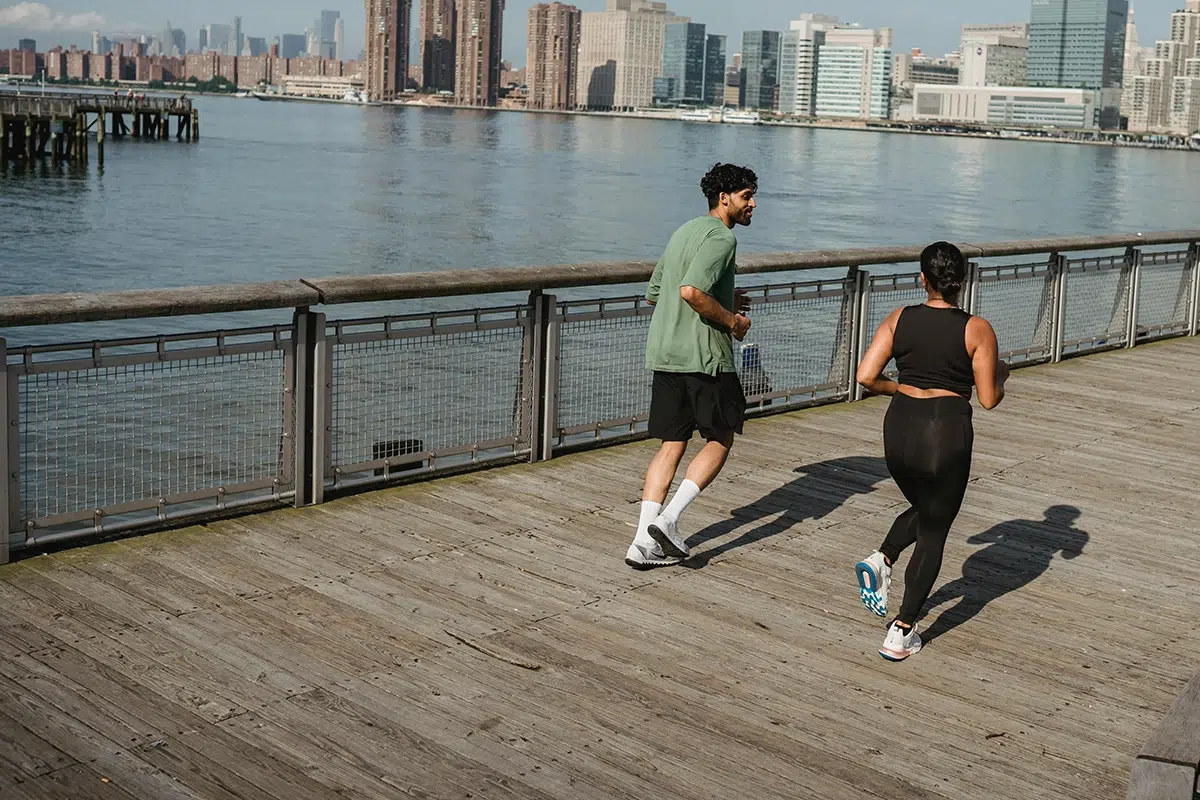Running is one of the most popular and accessible sports, offering numerous health benefits. However, many runners often ask: Why do I keep getting injured when running? or Does running damage the knees?. Whether you’re a beginner or an experienced runner, adopting the right techniques can help you avoid injuries and make the most of your runs. Here is a complete guide to running safely.
👉 Want to learn more about running? Check out our guide on the benefits of running.
👉 Looking to get back in shape with proper nutrition and exercise? Download our free expert guide for valuable tips!
Common Running Injuries: What You Need to Know
Running injuries often result from overuse, poor running technique, or lack of proper warm-up. Here are some of the most commonly affected areas and injuries:
Sport Aquagym or aquabiking: the best water workouts to sculpt your body and burn calories
- Calf pain: Common among beginners or those who increase their mileage too quickly.
- Achilles tendonitis: Often caused by repetitive strain without proper recovery.
- Runner’s knee (IT band syndrome): A common knee inflammation due to excessive training volume.
- Hamstring strains: Typically due to weak or overworked hamstring muscles.
- Stress fractures: Occur when training intensity is increased too rapidly.
👉 Curious about the calories burned while running? Use our running calorie calculator.
Why Do Runners Get Injured So Often?
Running puts significant stress on muscles and joints. Here are the main reasons for common running injuries:
- Improper footwear: Wearing the wrong shoes or worn-out trainers increases discomfort and risk of injury.
- Poor running technique: A bad posture or excessive heel striking can amplify impact forces.
- Overtraining: A lack of recovery between sessions leads to muscle and joint fatigue.
- Skipping warm-ups: Not preparing the muscles before running makes them more susceptible to injury.
If you experience pain after running, such as tightness in your upper leg muscle or soreness behind your thighs, review your training plan and allow time for recovery.
👉 Wondering if running helps with weight loss? Check out our guide on running for weight loss.
Sport Is Running Bad for Your Joints’ Health?
Does Running Damage the Knees?
Many runners worry about knee health, but running does not harm the knees if done correctly. Here’s how to protect your joints:
- Strengthen your muscles: Your quadriceps and hamstrings act as shock absorbers, reducing knee strain.
- Choose soft surfaces: Running on trails or tracks instead of pavement minimizes impact.
- Stretch regularly: Focusing on flexibility can help maintain joint mobility.
👉 Want to know which muscles running works? Find out more here.
Why Do My Legs Hurt After Running?
Post-run soreness is often caused by lactic acid buildup, insufficient warm-up, or inadequate recovery. Try these tips to reduce muscle discomfort:
- Stay hydrated: Drinking plenty of water helps flush out toxins.
- Stretch after your run: Focus on calves, quads, and hamstrings.
- Use massage tools: Foam rolling can help relax tight muscles.
- Prioritize rest: Give your body time to recover between sessions.
How to Prevent Running Injuries?
Taking a balanced approach to training can help avoid injuries. Follow these key recommendations:
Sport List of Various Yoga Styles: How to Choose the Right One? Benefits for Your Profile
- Increase intensity gradually: Avoid increasing your mileage by more than 10% per week.
- Incorporate strength training: Strengthening your core and lower body muscles reduces impact stress.
- Wear proper footwear: Choose trainers that match your running style and foot shape.
- Mix up your workouts: Cross-training with cycling or swimming reduces repetitive strain on your joints.
Running in Canada: Local Insights for Runners
Canada offers a variety of terrains and scenic locations perfect for running. Here are some of the top places to train across the country:
- Stanley Park Seawall, Vancouver: A breathtaking route with stunning ocean views and a well-maintained running path.
- The Rideau Canal, Ottawa: A scenic and flat running trail that transforms into a skating rink in the winter.
- Mount Royal, Montreal: A great uphill challenge for runners looking to build endurance, with spectacular views of the city.
- High Park, Toronto: A mix of paved and trail running routes, perfect for training in nature.
- The Banff Legacy Trail, Alberta: A picturesque route surrounded by the beauty of the Rocky Mountains.
👉 Track your energy expenditure while running with our calorie calculator: Check it out here.
Share Your Running Experience on X (Twitter)!
Have you ever dealt with a running injury? Share your experiences and recovery tips on X (Twitter).






